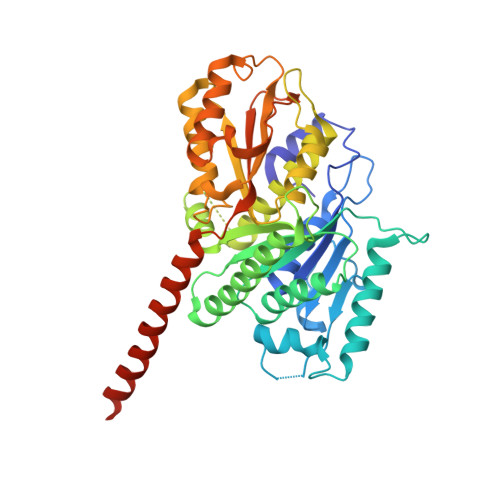Filament Structure of Bacterial Tubulin Homologue Tubz.
Aylett, C.H., Wang, Q., Michie, K.A., Amos, L.A., Lowe, J.(2010) Proc Natl Acad Sci U S A 107: 19766
- PubMed: 20974911
- DOI: https://doi.org/10.1073/pnas.1010176107
- Primary Citation of Related Structures:
2XKA, 2XKB - PubMed Abstract:
Low copy number plasmids often depend on accurate partitioning systems for their continued survival. Generally, such systems consist of a centromere-like region of DNA, a DNA-binding adaptor, and a polymerizing cytomotive filament. Together these components drive newly replicated plasmids to opposite ends of the dividing cell. The Bacillus thuringiensis plasmid pBToxis relies on a filament of the tubulin/FtsZ-like protein TubZ for its segregation. By combining crystallography and electron microscopy, we have determined the structure of this filament. We explain how GTP hydrolysis weakens the subunit-subunit contact and also shed light on the partitioning of the plasmid-adaptor complex. The double helical superstructure of TubZ filaments is unusual for tubulin-like proteins. Filaments of ParM, the actin-like partitioning protein, are also double helical. We suggest that convergent evolution shapes these different types of cytomotive filaments toward a general mechanism for plasmid separation.
- Medical Research Council Laboratory of Molecular Biology, Cambridge CB2 0QH, United Kingdom.
Organizational Affiliation:


















